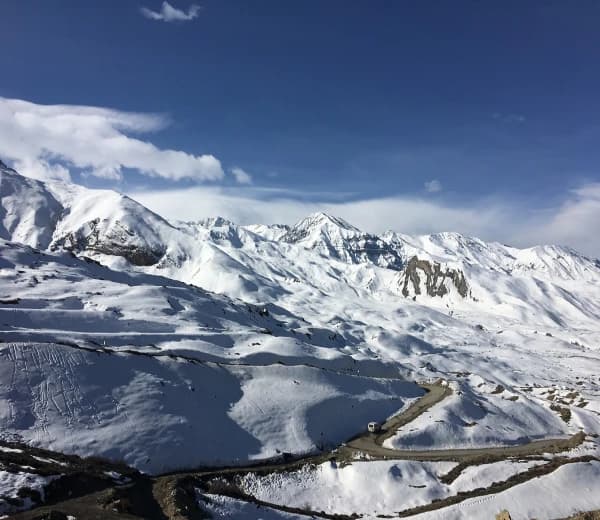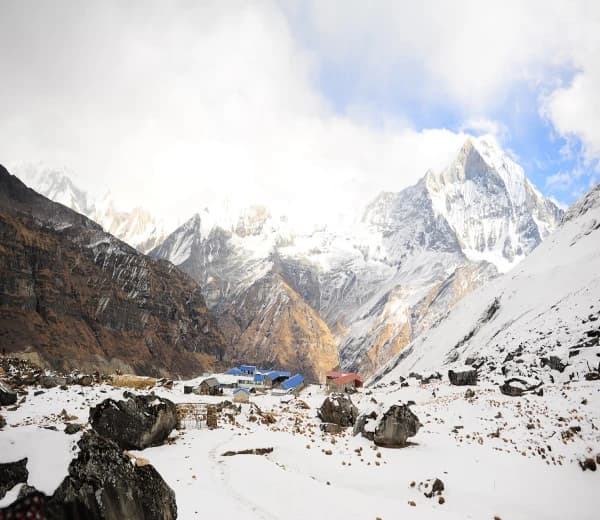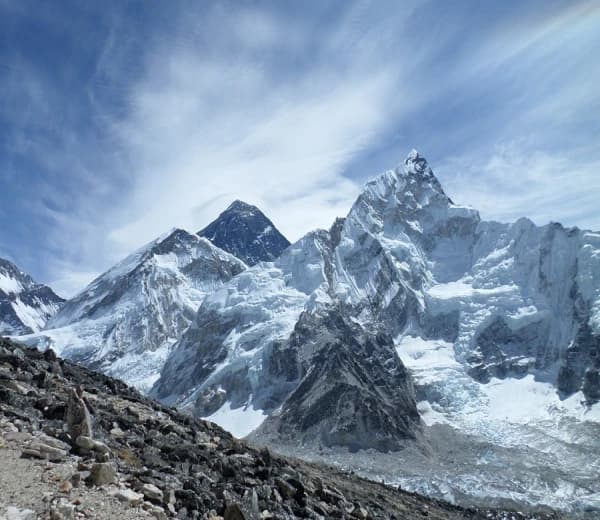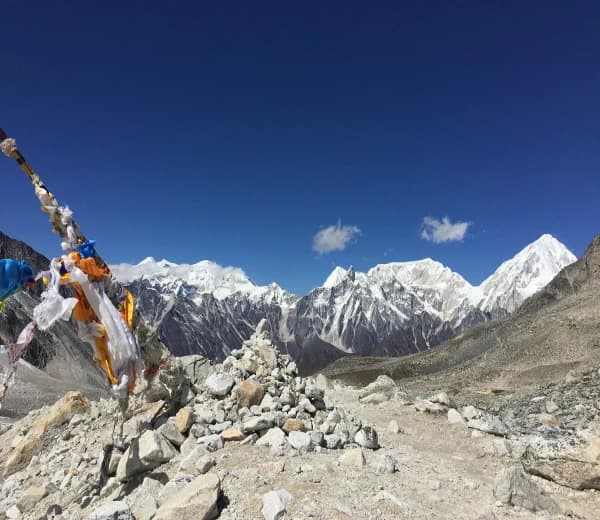Nepal is a beautiful landlocked country divided into three main regions: the Himalayan region, the Hilly region, and the Terai region. This diverse geography and favorable climate make Nepal a paradise for outdoor activities such as trekking in Nepal, hiking in Nepal, peak climbing in Nepal, and mountain expeditions in Nepal. the country is home to Mount Everest, the highest mountain in the world, which attracts thousands of trekkers, climbers, and adventure lovers every year. With a wide variety of trekking routes, breathtaking views of the snow-capped peaks, and a rich cultural heritage, Nepal is the ultimate destination for trekkers seeking both thrill and tranquility.
At Attentive Holiday Tours and Travels, we go beyond ordinary trekking experiences by offering expertly planned trekking packages in Nepal that ensure your journey through the Himalayas is unforgettable. Whether you are looking for a short and easy trek in Nepal or a challenging high-altitude trek in Nepal, we provide the best options for every type of traveler. With our specialized Himalaya Arirang Trek, we take you deep into the heart of Nepal’s majestic landscapes, ensuring a well-organized and truly memorable adventure.
Trekking in Nepal is generally categorized into two main types:
- Short Treks in Nepal: Ideal for beginners, casual trekkers, and those with limited time.
- High-Altitude Treks in Nepal: Perfect for experienced trekkers seeking adventure in remote and challenging terrains.
Short treks are perfect for travelers who want to experience Nepal’s natural beauty and culture without spending weeks in the mountains. These treks require less physical effort, making them suitable for all fitness levels. Short treks in Nepal usually range from one day to a week, covering lower elevations below 3000 meters (9800 feet). Altitude sickness is rarely an issue, making these treks easier and more accessible. Some of the best short trekking routes in Nepal are Nagarkot Trek (A scenic hike with the sunrise and sunset views over the Himalayas), Ghandruk Trek (A cultural trek through beautiful Gurung villages), Ghorepani Poonhill Trek (Famous for its panoramic sunrise views of Annapurna and Dhaulagiri), Chisapani Nagarkot Trek (A refreshing trek with stunning lanscapes and forests), Tamang Heritage Trail (A cultural trek showcasing Tamang traditions and heritage), Helambu Trek (A peaceful trek near Kathmandu with Buddhist culture and mountain views), Dhulikhel Namobuddha Hike (A short yet rewarding trek to a famous Buddhist monastery), etc. Short treks are ideal for those who want a quick Himalayan adventure in Nepal without extreme physical exertion. They often include stays in local guesthouse, teahouses, or basic lodges allowing trekkers to experience Nepalese hospitality while exploring scenic trails.
For those seeking for a more challenging adventure, high-altitude trekking in Nepal offers a once-in-a-lifetime experience. These treks takes you to elevation above 3500 meters (11500 feet) and require strong physical fitness, endurance, and acclimatization to prevent altitude sickness. Due to the reduced oxygen levels at high elevations, trekkers spend additional days at certain pints to adapt to the conditions.Some of the popular high-altitude trekking routes in Nepal includes Everest Base Camp Trek (The most famous trek, offering stunning views of Mount Everest), Annapurna Circuit Trek (A diverse trek through deep valleys, high mountain passes, and remote villages), Manaslu Circuit Trek (A challenging trek with breathtaking Himalayan scenery and rich Tibetan culture), Langatang Valley Trek (A beautiful trek near Kathmandu with spectacular mountain landscapes), Everest High Passes Trek (A tough adventure crossing multiple high-altitude passes), Kanchenjunga Trek (A remote trek to base of the third-highest mountain in the world), Makalu Base Camp Trek (A rugged and untouched trek for true wilderness lovers), Upper Dolpo Trek (A culturally unique trek through remote and mystical Dolpo region), Api Himal Trek (A lesser-known yet stunning trek in the far-western Himalayas), and so on High-altitude treks in Nepal take you into the raw and untouched wilderness, where the landscapes transform dramatically. As you ascend, vegetation becomes sparse, temperature drops, and the possibility of snowstorms increases. The trail leads to remote mountain villages, ancient monasteries, and high-altitude lakes, providing a deep cultural and spiritual experience. Unlike short treks, these journeys demand excellent physical conditioning, proper gear, and sometimes technical skills.
Why Trek in Nepal?
Trekking is not just a journey through mountains – it’s a journey into the heart of nature, culture, and self-discovery. With its unique combination of towering Himalayan peaks, rich cultural diversity, and warm hospitality, Nepal stands out as one of the best trekking destinations in the world.
Nepal offers a perfect blend of natural beauty and cultural richness. The country’s landscape ranges from lush green valleys to rugged mountain trails, with panoramic views of some of the world’s most iconic peaks like Mount Everest, Annapurna, Manaslu, and Langtang. Trekking through these trails allows you to witness the grandeur of the Himalayas up close, making every step truly unforgettable.
In Nepal, trekking is the ultimate adventure activity that combines the breathtaking natural beauty of the Himalayas with rich and diverse cultural experiences. The country’s lush valleys and rugged mountain terrains offer panoramic views of the majestic Himalayas, including world-famous peaks like Mount Everest, the highest mountain in the world, and the stunning Annapurna mountain range. These scenic landscapes captivate trekkers at every turn. Trekking in Nepal takes you through remote villages where you’ll encounter a variety of local cultures and traditions that differ from one region to another. You’ll also have the opportunity to explore ancient Buddhist monasteries, view centuries-old artifacts, and enjoy authentic traditional Nepali food.
Whether you’re a beginner or an experienced hiker, there are countless trekking routes in Nepal to choose from. The Ghorepani Poonhill trek is perfect for beginners looking for an easy and rewarding trail, while the Everest Base Camp Trek offers a more challenging and adventurous experience for seasoned trekkers. Each trekking route in Nepal promises a unique mix of natural wonders, cultural immersion, and spiritual serenity.
With Himalaya Arirang Trek, your journey becomes more than just a hike-it transforms into a life-changing trekking experience in Nepal, filled with peace, excitement, and unforgettable memories in the heart of the Himalayas.
What are the training needed for Nepal Trekking?
If you are going on a Nepal trek, it is highly recommended that you make plans to ensure the safety of your trip and its rewarding nature. This means building your cardiovascular endurance through activities like running or cycling, as well as strength training that will help you tackle steep ascents. Understanding how to use trekking poles and how layering systems work in clothing are among some of the fundamental things one must familiarize oneself with while hiking. Moreover, adjusting to high altitudes and cultivating mental toughness may assist you in coping with both the physical and psychological implications brought about by trekking. Those who would like to know more about local traditions, customs, weather conditions, or vaccinations required for a particular region can go ahead and educate themselves so as to improve their overall experience while gaining respect for Nepal’s environment and culture through getting prepared for such eventualities.
What should I pack for trekking in Nepal?
Trekking in Nepal is an exhilarating adventure that demands careful preparation and packing. To ensure a comfortable and successful trek, it’s crucial to pack versatile clothing suitable for varying weather conditions, including moisture-wicking base layers, insulating layers for warmth, and waterproof outer layers. A sturdy pair of hiking boots, along with lightweight camp shoes, will keep your feet protected and comfortable on rugged terrain. Essential gear includes a well-fitting backpack, a quality sleeping bag, and trekking poles for stability. Don’t forget to bring personal items such as sunscreen, lip balm, and a first aid kit to safeguard your health. Proper documentation, including your passport and necessary permits, along with cash in Nepali Rupees, will facilitate smooth travels. By packing thoughtfully and preparing for the diverse conditions of the Himalayan trails, you'll be well-equipped to enjoy the stunning landscapes and cultural richness of Nepal.








